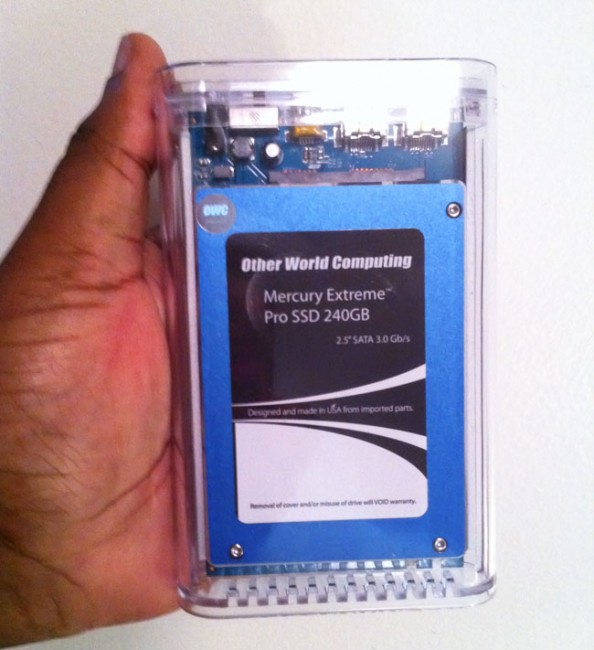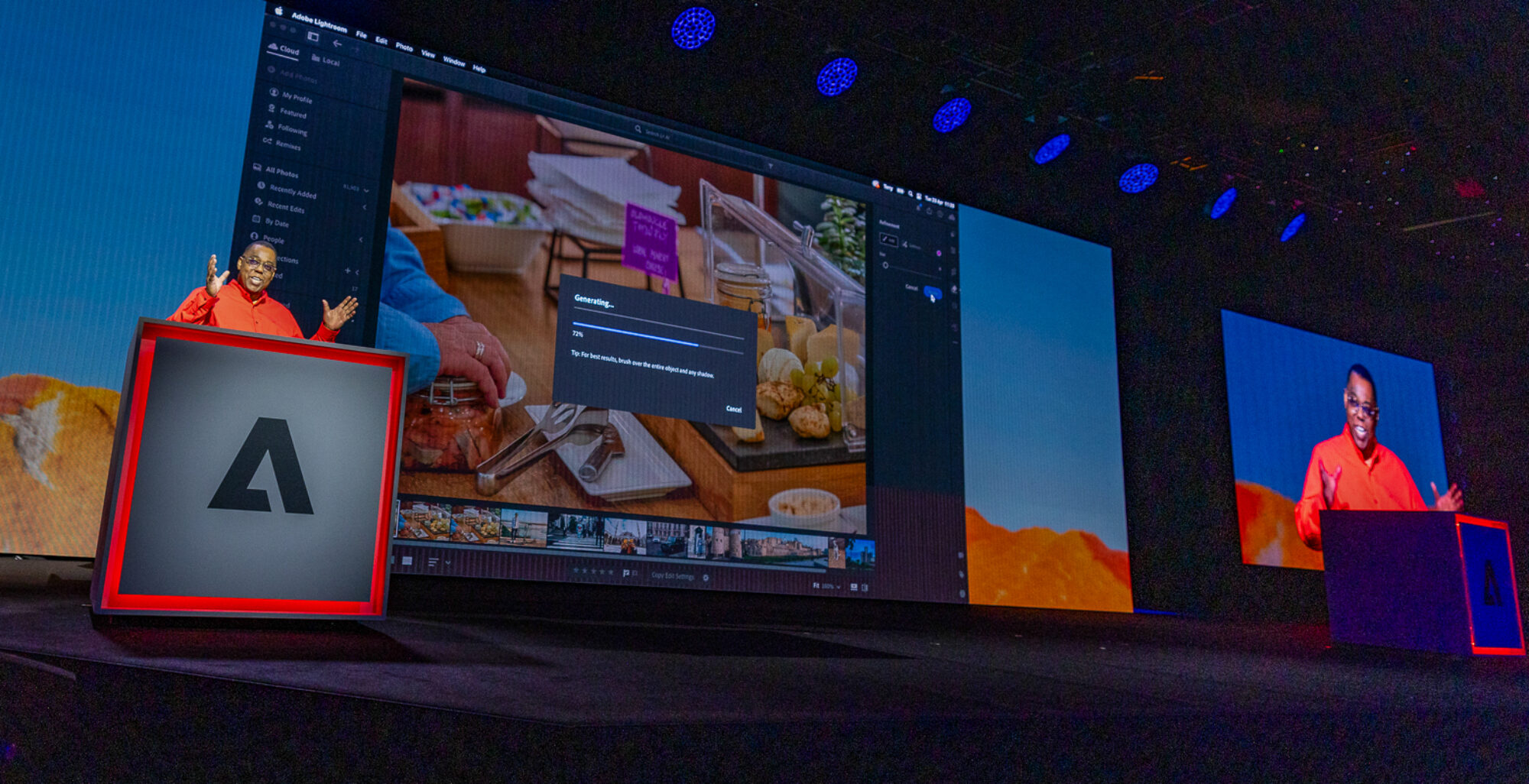
Yes I'm a speed freak. I spent much of the money I made as a youth paying for speeding tickets. This means I also like my computers to go as fast as possible. I moved to SSD (solid state drive) drives with my latest notebooks and while the cost is high, I do like the boot times, application launch times and of course the data copy times (see my original boot time comparison video here). Speaking of data copy this made me think about the drives that I'm copying that data to and from. While it's great having a fast internal drive, I started to look at the external drives I carry around too. This is when I decided to test the OWC Mercury On-The-Go SSD External Portable Drives. The good folks over at OWC sent me a review unit (a 240GB Mercury Extreme Pro). The first thing I wanted to test was copy speeds. The drive comes with a 1.73GB disk image of shareware on it. I figured I'd start my test copying this file back and forth and between drives.
Copy Times (shorter is better)

To copy 1.73GB disc image from the OTG 240GB SSD Drive

To copy 1.73GB disc image to the OTG 240GB SSD Drive

To copy 1.73GB disc image from the LaCie

To copy 1.73GB disc image to the LaCie
Next up a folder of RAW photos

To copy 3.87GB folder of photos from the OTG 240GB SSD Drive

To copy 3.87GB folder of photos to the OTG 240GB SSD Drive

To copy 3.87GB folder of photos from the LaCie Drive

To copy 3.87GB folder of photos to the LaCie Drive
The OWC SSD drive won in every test and I imagine with larger copies such as backups and clones the time savings would be realized even more.
A Startling Realization – Firewire 800 is not fast enough
After doing just a couple of tests with the new SSD drive and my existing LaCie Rugged Drive I realized that while the OWC SSD drive was faster (see the numbers above), it wasn't night and day faster. I have a theory that the bottleneck is the Firewire 800 bus itself. In other words the data can only go as fast as Firewire 800 will transfer it.
The Bottom Line
The OWC Mercury On-The-Go with an Extreme Pro SSD drive is Fast, Silent and Portable! It's also likely to be more reliable as there are no moving parts to fail like in traditional hard drives. SSD drives can slow down over time and that has yet to be seen with this model as I haven't had it long enough to know if that will happen or not. The one thing that isn't an advantage right now is speed over traditional drives with FW800. With that said they do offer a USB 3.0 version that will likely yield faster results over FW800 if you happen to have a USB 3.0 equipped computer. However, until we see Thunderbolt based portable drives I don't think we'll see the real speed potential of these SSD drives. With that said, you'd have to weigh the cost of going SSD vs. traditional hard drives for your portable data needs. Having a drive with no moving parts/peace of mind comes at a premium price.
The OWC Mercury On-The-Go 240GB SSD goes for $479.99
Their 320GB 7200 RPM Drive in the same case goes for $104.99.


Could one of the issues with speed also be attributed to the fact that data is written sequentially and this is an advantage to kinetic or spinning HDD’s. They read an write in sequential order. I have an SSD as a boot drive and one as a data drive in my 15 inch MBP and can say that there is no major speed difference between the spinning drive and the SSD. The only difference is that my MBP is lighter by a tiny bit and the battery life seems to be a bit longer. Nothing worth mentioning. My solution is expensive but I just wanted to have it to have, not based on performance.
Apple has the hardware solution already in place – Thunderbolt. So why isn’t OWC producing Thunderbolt SSD drives?
I guess we could ask that question of just about every hard drive manufacturer out there. Must be more to it than we know.
Because the limited size of SSDs currently makes it not worth the effort. SSD drives are being produced to usurp boot drives, so app launching, cache files and virtual memory work faster. People going to external drives need speed and size so the sweet spot is big drives, only currently available in spinning platters and RAID.
Agreed. As I mentioned SSD’s are all times faster but sometimes not as efficient as spinning drives. Having an external SSD drive is more of a luxury or want than real need as the xfer rates will be similar due to the way data is written to the drive.
You are correct about the Firewire bottleneck. Quick math says all the copy sizes divided by the time it took = roughly 80MBs which is the limits of Firewire 800 at 800 Mbs.
this is very cool, but probably still to expensive for me.
Getting 80-90MB/second is pretty awesome on the FW800 interface. Out of curiosity, how big was the Lacie drive, and was it writing to the faster outer track, or was it writing to the slower inner track of the drive? It seems that when filling up a 2TB drive, towards the end, I’m counting myself lucky if I can maintain 50-60MB/second, let alone achieving 80-90MB/second. 🙁
Trying out USB3.0 on my desktop, I was surprised to see 110-120MB/second transfers. Really makes me wish my MBP has the USB3 interface or better yet, a thunderbolt to portable drive interface. That would rock, especially if the portable enclosure had 2 x SSD or 2 x HD to stripe the information for faster transfers. Those RAW files seem to get bigger and bigger with each generation… -_-;;
Where an SSD really shines is with apps that do a lot of disk I/O. Fixing permissions via Disk Utility is a good way to test that.
That in turn makes a SSD great for an older Mac that doesn’t have enough RAM to run Lion well and ends up doing a lot of disk thrashing. My aging MacBook with 2.5 Gig of RAM and an 60 Gig OWC SSD is silky smooth. My iMac from the same generation with 3 Gig of memory has become a pain with Lion. Getting that SSD allows me to delay upgrading both until Macs begin to ship with Ivy Bridge chips and USB 3.0 next year.
When I do, I plan to use that OWC SSD as a second drive in a Mac mini, putting my most-oft-used apps and documents on it.
–Michael W. Perry, author of Untangling Tolkien
You really believe Apple will go with USB 3? never gonna happen.
I would not expect to see a Mac with USB 3.0. No reason for them to add it with Thunderbolt….